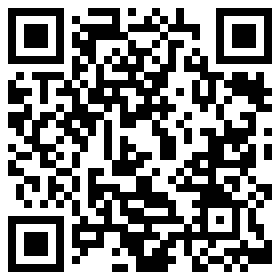QR Codes - Simple Augmented Reality
Simple Augmented Reality
 The Horizon Report, a joint report by The New Media Consortium and Educause identifies and describes emerging technologies likely to have a large impact on teaching, learning, or creative inquiry on college and university campuses within the next five years. All of the emerging trends in the 2010 Horizon report have a relationship to augmented reality: electronic books, mobile learning, open content, gesture-based computing and visual data analysis. Augmented reality is an environment that includes real world and virtual world experiences. Today's smart phones make the use of simple augmented reality possible at little to no cost.
The Horizon Report, a joint report by The New Media Consortium and Educause identifies and describes emerging technologies likely to have a large impact on teaching, learning, or creative inquiry on college and university campuses within the next five years. All of the emerging trends in the 2010 Horizon report have a relationship to augmented reality: electronic books, mobile learning, open content, gesture-based computing and visual data analysis. Augmented reality is an environment that includes real world and virtual world experiences. Today's smart phones make the use of simple augmented reality possible at little to no cost.
QR Codes
 |
| QR Code GSSC1026 Video |
One way to introduce simple augmented reality into a classroom is with the use of QR Codes. Widely used in Japan and Europe for several years, QR codes are now being seen in North America. They are especially prevalent in marketing but they are also being used to provide location specific information in museums, on tours and for school orientations.
In education, QR Codes can be used in a number of ways that involve little to no cost. The simple QRcodes can be created easily; code readers can quickly be downloaded to smart phones. And with a large number of students owning smart phones, there will undoubtedly be enough in a classroom already to enable a group interaction. A teacher could design a series of codes to create opportunities for critical thinking, collaboration and discovery.
The codes can trigger text, images, videos and URLs. Students could also easily create their own tasks by creating the simple codes and having their classmates discover information. These types of assignments lend themselves to almost every grade level
The following assignment was used in Karen's college Psychology of Consumer Behaviour class. To investigate internet memes - the often parodied viral videos that become widely popular - the teacher created QR Codes that triggered several viral videos. The QR codes were posted in different areas of the classroom. For the first part of the lesson, the class learned how to download code reader applications to their smart phones. For the iPhone, NeoReader was chosen and for Blackberry, users downloaded BeeTagg. Because the room had wireless access, students logged on to the network in the school to avoid costs on their own mobile.
After students had downloaded the code readers, they were directed to work in groups to view and discuss the QR code triggered videos. They were asked to view the videos, analyze them and determine as a group why each video had gone viral. By understanding what makes ideas stick it was hoped that students would have a greater understanding of why some marketing efforts work and why some don't. As a secondary task students were asked to brainstorm how QR codes might be used in their projects.
To explain QR Codes, Karen created the following video:
Supplementary material that was presented for the lesson:
The Tokyo N Building covered in QR codes is designed so passers-by can read the changing codes and get information via sites like Twitter. More in depth info like specials available in stores, who is tweeting and what they are tweeting comes from an iPhone app.

N Building from Alexander Reeder on Vimeo.
Next up, Digital Storytelling- ESL
